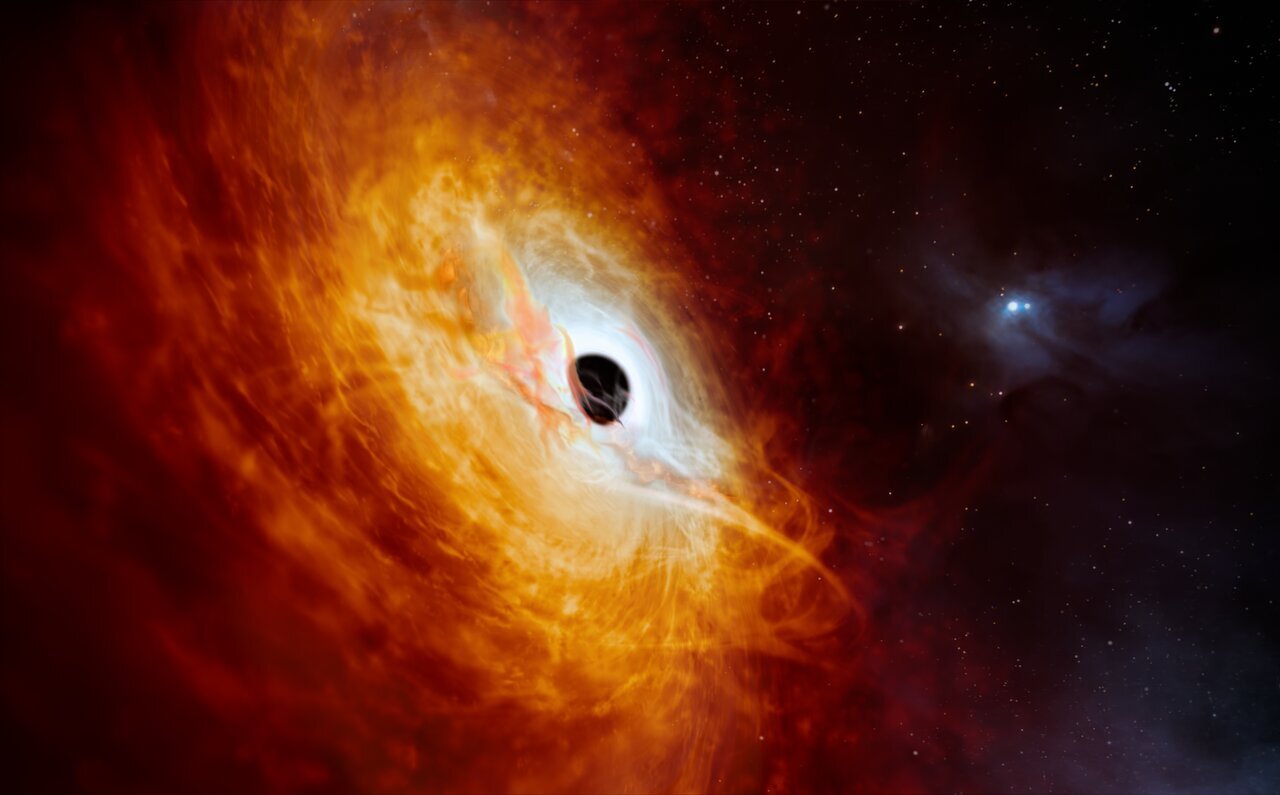
Using the European Southern Observatory’s (ESO) Very Large Telescope (VLT), astronomers have characterized a bright quasar, finding it to be not only the brightest of its kind but also the most luminous object ever observed...
Read More

Using the European Southern Observatory’s (ESO) Very Large Telescope (VLT), astronomers have characterized a bright quasar, finding it to be not only the brightest of its kind but also the most luminous object ever observed...
Read More
Left: The paths traced by the known Martian Trojans around L4 or L5 (crosses) relative to Mars (red disk) and the Sun (yellow disk). The dotted circle indicates the average Sun-Mars distance. Right: Enlargement of inset (dashed rectangle) showing the paths of the 8 L5 Trojans: 1998 VF31 (marked as “VF31” – blue), Eureka (red) and the 6 objects identified as family members (amber). The filled disks indicate the relative sizes of the asteroids. Eureka, the largest member, is about 2 km across. Credit: Apostolos Christou
Mars shares its orbit with the Trojans, a handful of small asteroids. Now an international team using the Very Large Telescope have found that most of these objects share a common composition; they are likely the remains of a mini-planet destroyed by a collision long ago...
Read More
Recent Comments